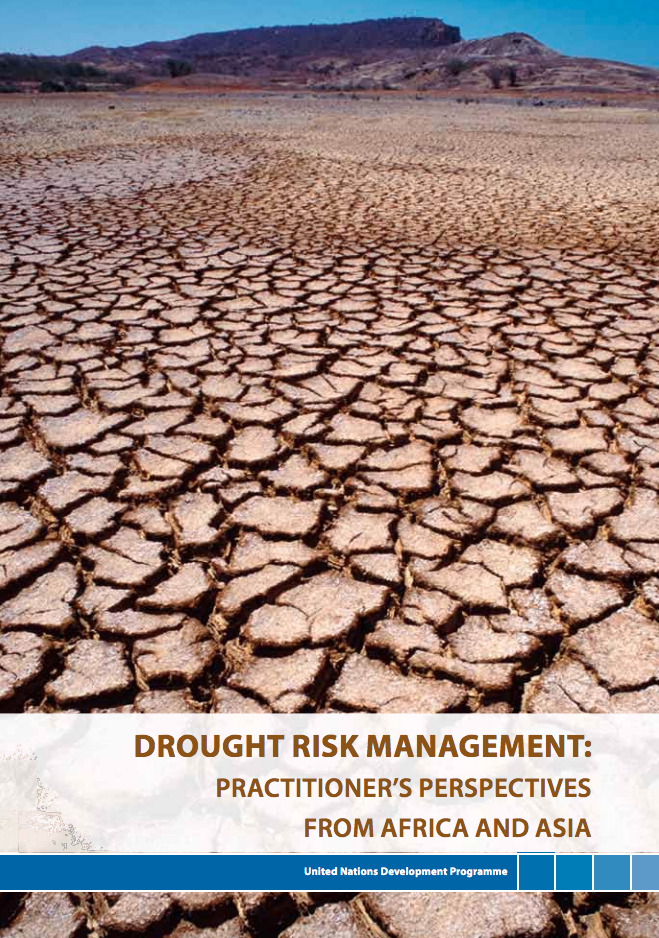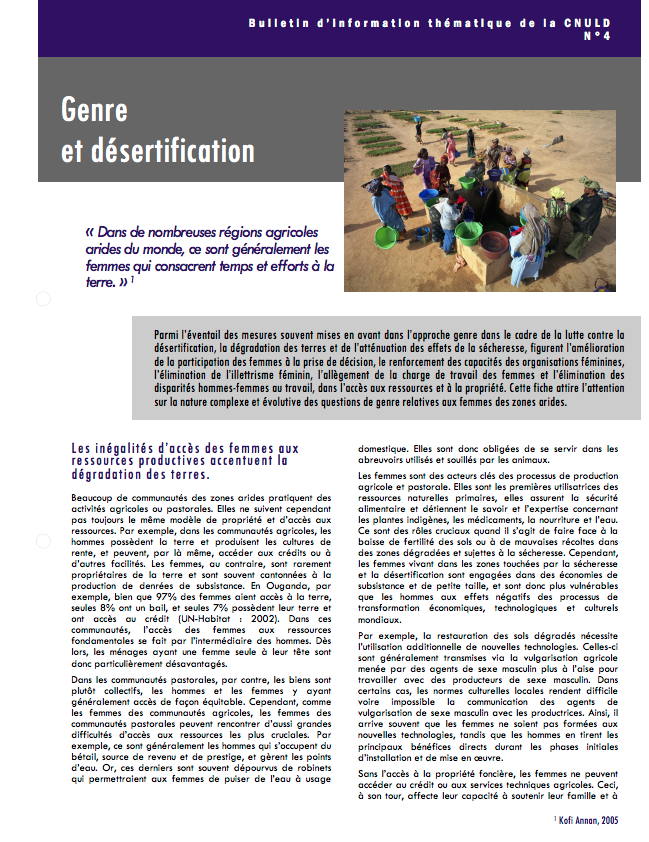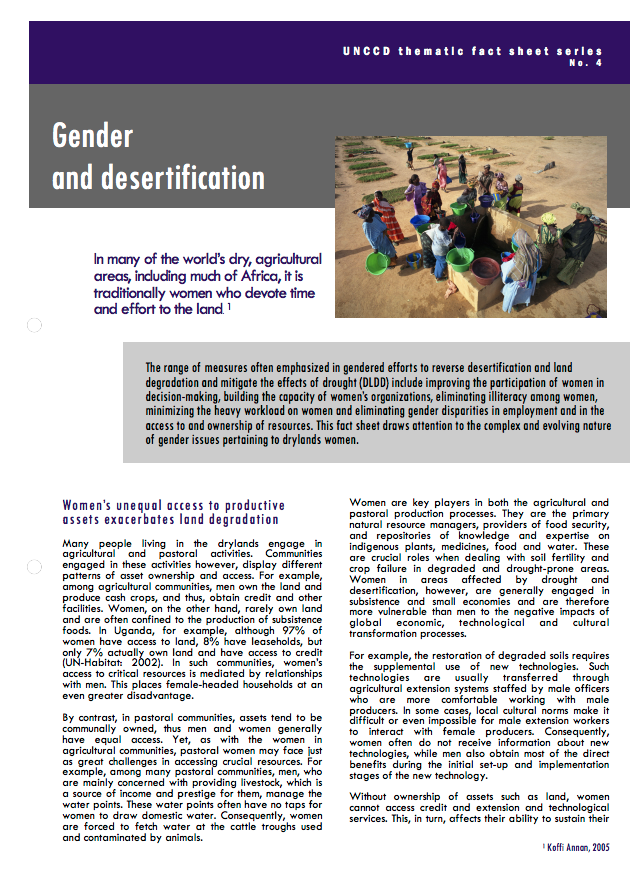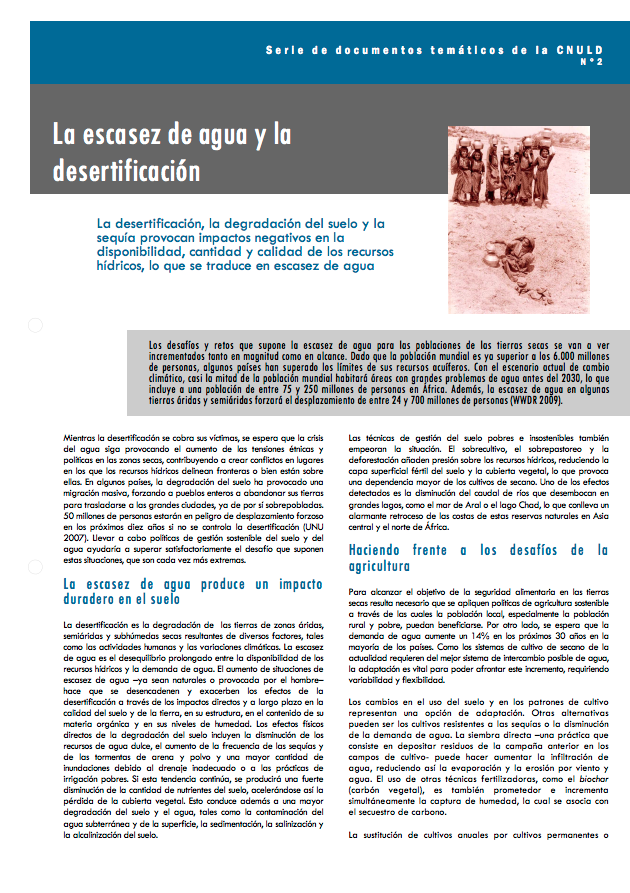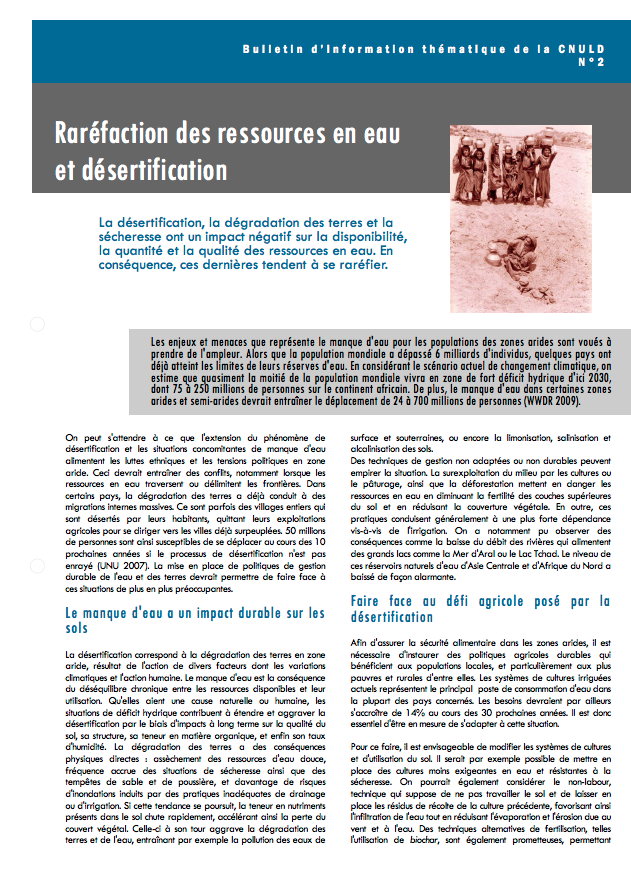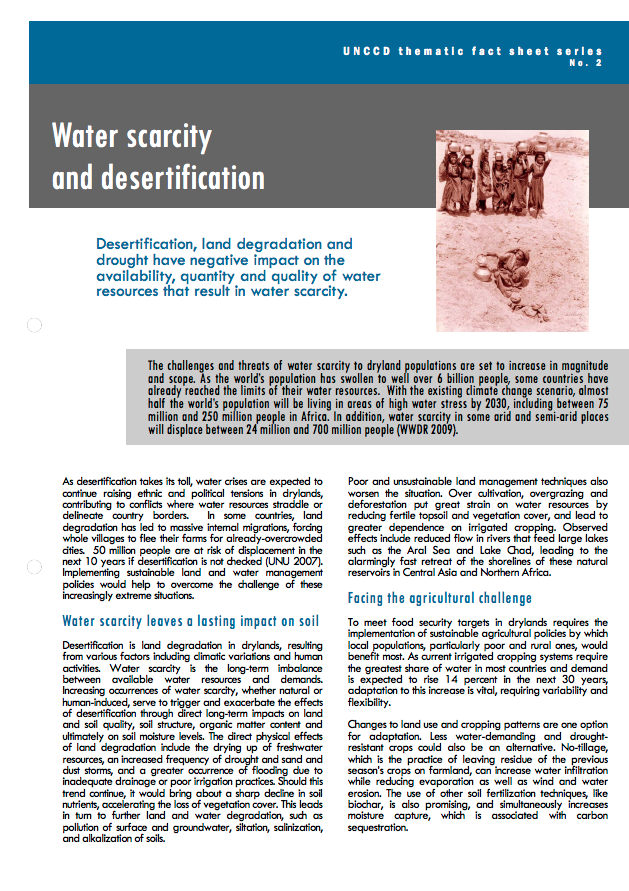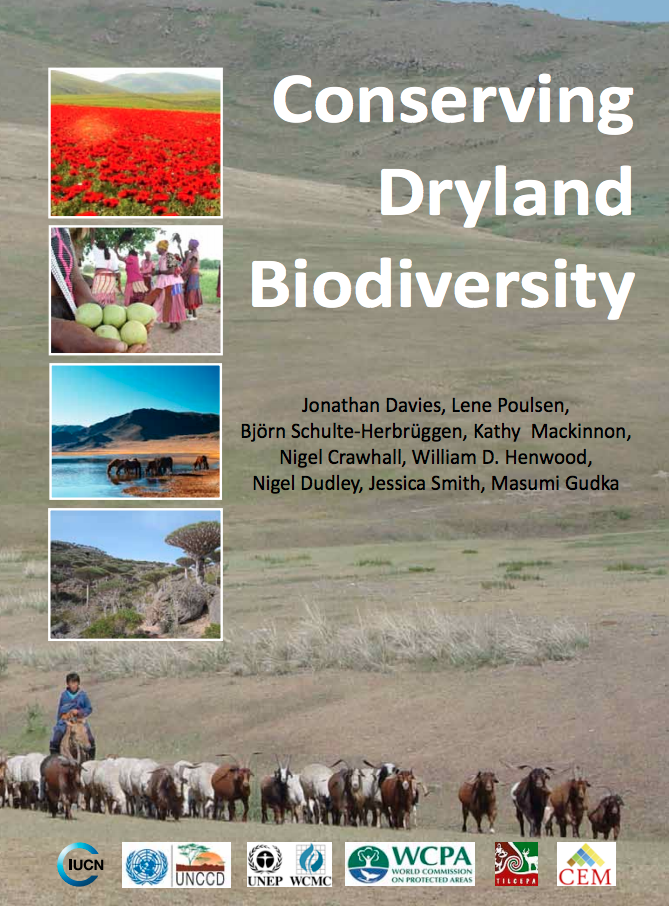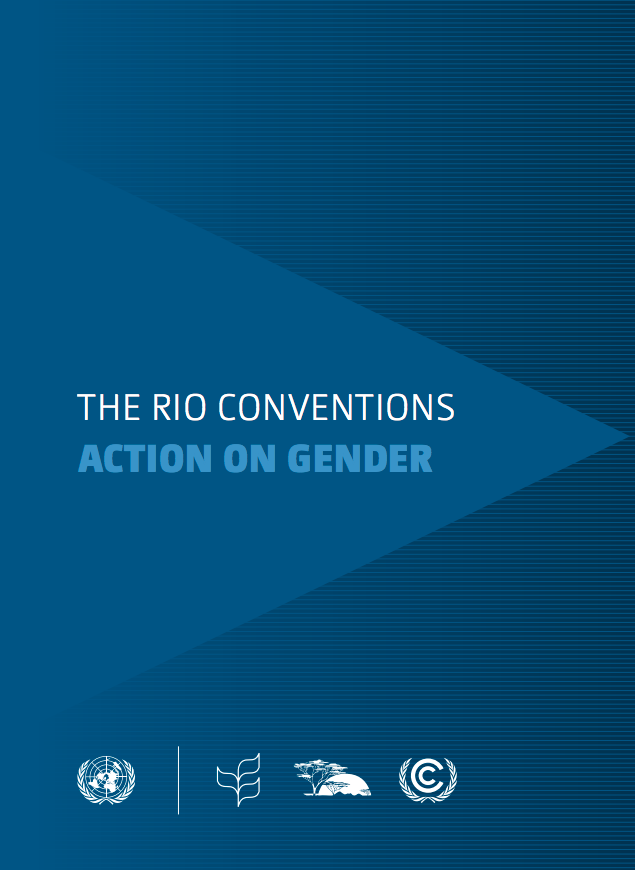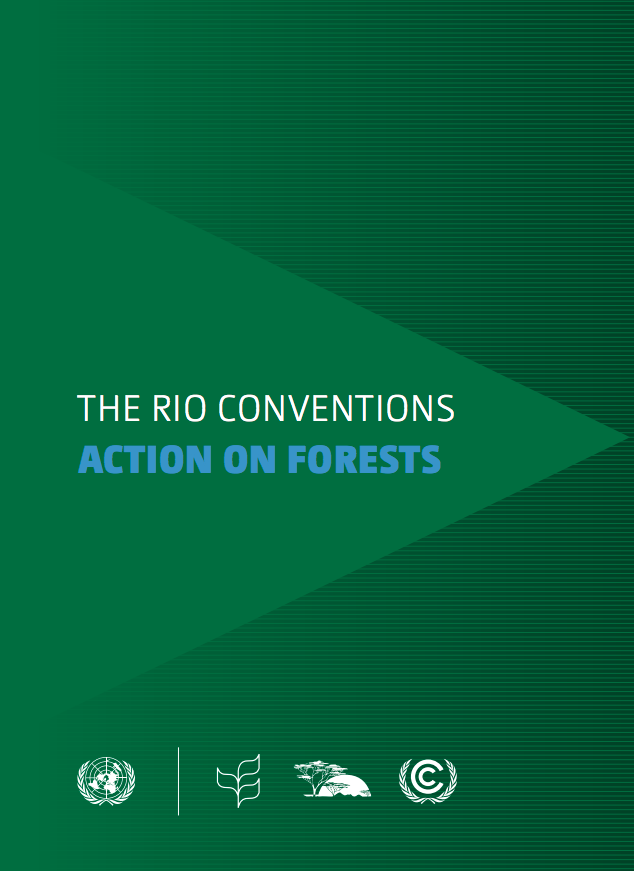Details
Location
Contributions
Displaying 331 - 340 of 2403Drought risk management: Practitioner's perspectives from Africa and Asia
The Africa–Asia Drought Risk Management Peer Assistance Project seeks to facilitate the sharing of knowledge and technical cooperation among drought-prone countries in Africa and Asia and thus to promote best practices in drought risk management (DRM) for development in the two regions. In order to establish a baseline to guide this activity, the United Nations Development Programme Drylands Development Centre (UNDP DDC) undertook a stocktaking exercise between March and June 2011 on drought impacts, causes, trends and solutions in Africa and Asia.
Género y desertificación
El conjunto de medidas a menudo señaladas desde la perspectiva de género para revocar la desertificación y la degradación de las tierras y atenuar los efectos de la sequía (DLDD) incluye: la mejora de la participación de las mujeres en la toma de decisiones, la creación de capacidad de las organizaciones de mujeres, la erradicación del analfabetismo femenino, la disminución de su carga de trabajo y la desaparición de las disparidades de género, tanto en el trabajo como en el acceso y posesión de recursos.
Genre et désertification
Parmi l’éventail des mesures souvent mises en avant dans l’approche genre dans le cadre de la lutte contre la désertification, la dégradation des terres et de l’atténuation des effets de la sécheresse, figurent l’amélioration de la participation des femmes à la prise de décision, le renforcement des capacités des organisations féminines, l’élimination de l’illettrisme féminin, l’allègement de la charge de travail des femmes et l’élimination des disparités hommes-femmes au travail, dans l’accès aux ressources et à la propriété.
Gender and desertification
The range of measures often emphasized in gendered efforts to reverse desertification and land degradation and mitigate the effects of drought (DLDD) include improving the participation of women in decision-making, building the capacity of women’s organizations, eliminating illiteracy among women, minimizing the heavy workload on women and eliminating gender disparities in employment and in the access to and ownership of resources. This fact sheet draws attention to the complex and evolving nature of gender issues pertaining to drylands women.
La escasez de agua y la desertificación
Los desafíos y retos que supone la escasez de agua para las poblaciones de las tierras secas se van a ver incrementados tanto en magnitud como en alcance. Dado que la población mundial es ya superior a los 6.000 millones de personas, algunos países han superado los límites de sus recursos acuíferos. Con el escenario actual de cambio climático, casi la mitad de la población mundial habitará áreas con grandes problemas de agua antes del 2030, lo que incluye a una población de entre 75 y 250 millones de personas en África.
Raréfaction des ressources en eau et désertification
Les enjeux et menaces que représente le manque d'eau pour les populations des zones arides sont voués à prendre de l'ampleur. Alors que la population mondiale a dépassé 6 milliards d'individus, quelques pays ont déjà atteint les limites de leurs réserves d'eau. En considérant le scénario actuel de changement climatique, on estime que quasiment la moitié de la population mondiale vivra en zone de fort déficit hydrique d'ici 2030, dont 75 à 250 millions de personnes sur le continent africain.
Water scarcity and desertification
The challenges and threats of water scarcity to dryland populations are set to increase in magnitude and scope. As the world’s population has swollen to well over 6 billion people, some countries have already reached the limits of their water resources. With the existing climate change scenario, almost half the world’s population will be living in areas of high water stress by 2030, including between 75 million and 250 million people in Africa. In addition, water scarcity in some arid and semi-arid places will displace between 24 million and 700 million people (WWDR 2009).
Conserving Dryland Biodiversity
Dryland biodiversity is of tremendous global importance, being central to the well-being and development of millions of people in developing countries. In June 2012, at the UN Conference on Sustainable Development (or “Rio+20”), global leaders from governments and civil society reaffirmed the intrinsic value of biological diversity and recognised the severity of global biodiversity loss and degradation of ecosystems. Although drylands were implicitly recognised, there continues to be inadequate attention to this major biome that covers such a vast part of our world’s terrestrial surface.
The Rio Conventions: Action on Gender
The year 2012 marks the twentieth anniversary of the Rio Earth Summit, which resulted in the establishment of the three Rio Conventions: the Convention on Biological Diversity (CBD), the United Nations Convention to Combat Desertification (UNCCD ) and the United Nations Framework Convention on Climate Change (UNFCCC ).
The Rio Conventions: Action on Forests
The importance of forests in climate change, biodiversity and desertification/land degradation
Forests cover approximately 30 per cent of the Earth’s land surface and provide important ecosystem goods and services, including food, fodder, water, shelter, nutrient cycling, air purification, and cultural and recreational amenities. Forests also store carbon, provide habitat for a wide range of species and help alleviate land degradation and desertification.


